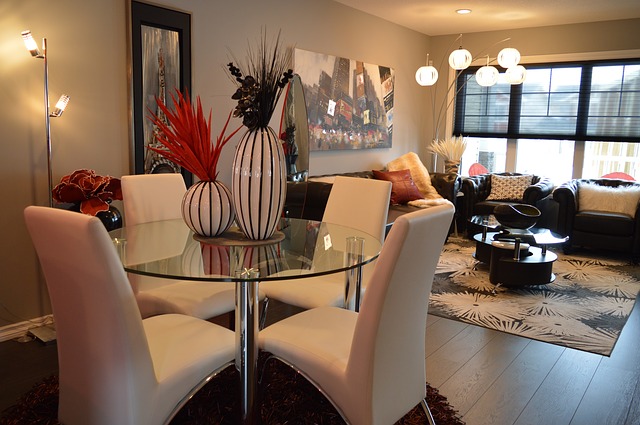So you’ve finally pulled the plug on incandescent and fluorescent lighting in your home. Congratulations! You finally realized that fluorescent lighting gives an eerie, horror-movie glow to your home and you’re tired of changing incandescent lightbulbs every other week. It takes a while to admit to yourself the need to have light-emitting diodes (also known as LED lights) in your home, but that’s the first step. We’re here to show you the next few steps on how to incorporate LED lights into your home.
- Start with the kitchen. The beautiful thing about beginning your new life of using LED lights is that you can use them in ways you never expected. Consider using them as under-cabinet kitchen lights. Due to their very directional nature and design, it’s best to use them to highlight areas of your kitchen, rather than expect them to light up the entire room. As a result, you’ll need to add more lights to your kitchen to increase the brightness. It’s okay if you need to use more, though. The cost out of your pocket will ultimately save you in the long run, as these puppies don’t need to be changed for a very, very long time.
- Use them for decorations. Holiday lights, we’re looking at you. Using DEKOR LED lighting will improve your holiday bills as well as your decoration skills. Do you hate replacing your lightbulbs? Yep, us too. Luckily, that doesn’t happen as frequently with LED lights. The light just dims over time. They can provide up to 100,000 hours of light. While LED lights tend to be pricier than fluorescent and incandescent lights, their lifespan pays off. Holiday LED lights have many advantages to them, which include safety, sturdiness, easy set-up, and best of all: longer-lasting. They’re safer because they aren’t as hot as incandescent lights, which decreases the likelihood of breakage and burnt body parts. They aren’t made of glass, either, which accounts for both sturdiness and safety. Plus, because they’re longer-lasting, you won’t have to buy new lights nearly as often. We’re talking at least twenty years. The light will have a cooler glow to it, which will add to the otherworldliness of your decorations.
- Use them for your plants. If winter has come or your home doesn’t produce enough light as you would like, it’s hard for your plant to photosynthesize. As we all know, photosynthesis is food for the plant. It’s simple enough: if your plant isn’t getting enough light, it’s much weaker. Much like if you were to eat a lot less food every day for four months, you would become weaker. Hence, giving your plants the light they need and deserve will make them stronger and make you happier. Even the light colors are designed in a way that help your plants. This is called targeted wavelengths. Studies have shown that plants are more sensitive to red and blue colors of light. While they can grow under only red light, the plants can be unhealthy. So adding blue and even green will produce very healthy and happy plants. Honestly, LED lighting technology is pretty cool.
- And then use them for everything else.With the LED lamp being built and marketed in many different forms, you have a wide variety of lights to choose from. You can incorporate them for your bathroom (and avoid disastrous bathroom lightbulb replacements), or you can place them in your living room, or even your own bedroom. There are loads of new areas to try out your new lights, and your home is just a place waiting for it to happen.
While your first instinct might be to just pick up another box of incandescent bulbs the next time you go to the supermarket, don’t do it. Instead, set aside some time to examine your home and figure out what you want to add to your light situation. You can always start small by buying some lights for your plants or kitchen, or you can start going big if you know this is something you can commit to. Whatever you choose, you won’t regret it.
